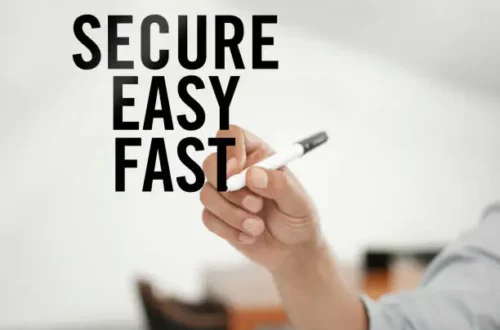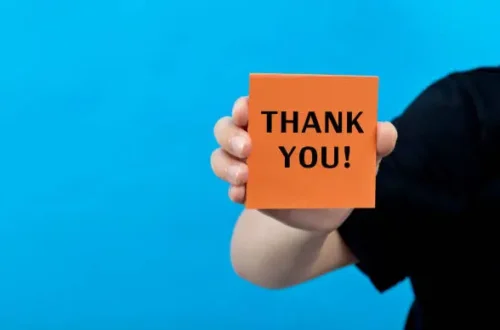If you’ve ever wondered how some people seem to effortlessly reach their health goals, you might be surprised to learn that visualization plays a huge role in their success. Visualization is more than just daydreaming—it’s a powerful mental tool that can transform your health journey by aligning your mind and body toward your goals. In this article, we’ll explore how to harness visualization effectively so you can crush your health objectives, whether it’s losing weight, reducing stress, or boosting fitness.
Understanding Visualization and Its Power
What Is Visualization?
Visualization is the practice of creating vivid mental images of a desired outcome. Imagine your mind as a movie theater, and you’re the director playing a film of you achieving your health goals. By mentally rehearsing success, you’re programming your brain to believe it’s possible and guiding your actions accordingly.
The Science Behind Visualization and Health
You might think visualization is just fluff, but research shows it actually activates the same neural pathways as real experiences. According to Dr. Joe Dispenza, a neuroscientist and author, visualizing a positive event can cause the brain to “fire” as if it’s happening right now. This activation can affect your hormones, immune response, and motivation levels—key components in reaching health goals.
Why Visualization Works for Health Goals
Mind-Body Connection Explained
Our minds and bodies are intricately linked. When you visualize a healthy lifestyle, your brain starts sending signals that promote positive behaviors like exercising and eating well. The stronger your mental image, the more your body responds to make it real.
Psychological Benefits of Visualization
Visualization reduces anxiety about the unknown by making your goals feel tangible. It also boosts confidence and focus, making you less likely to quit when challenges arise. In other words, it’s a mental workout preparing you for real-life success.
Setting Clear Health Goals for Visualization
How to Define Your Health Goals
Before you visualize, get crystal clear on what you want. Instead of vague goals like “get fit,” try specifics like “lose 10 pounds in 3 months” or “run a 5K without stopping.” Specificity helps your brain build precise images.
Breaking Down Goals into Achievable Steps
Big goals can feel overwhelming. Break them into smaller milestones—like hitting a certain number of workouts weekly or cooking healthy meals daily. Visualize each step, so your brain knows exactly what success looks like at every stage.
Preparing for Your Visualization Practice
Creating a Relaxing Environment
Find a quiet, comfortable space free from distractions. This helps your mind focus fully on the visualization without interruptions. You might want to dim the lights or play soft instrumental music.
Choosing the Right Time and Frequency
Consistency is key. Most experts recommend daily visualization sessions lasting 5-15 minutes, ideally in the morning or before bed. These times anchor your mindset and prime your brain for a productive day or restful night.
Step-by-Step Guide to Effective Visualization
Step 1: Find a Quiet Space
Sit or lie down comfortably in a distraction-free zone. Close your eyes to help internalize your focus.
Step 2: Use All Your Senses
Don’t just see your goal—imagine the sounds, smells, textures, and feelings. For example, if you’re visualizing a jog, hear your breathing, feel the breeze, smell fresh air.
Step 3: Picture the Outcome in Detail
Visualize the exact moment you reach your health goal. See yourself stepping on the scale, feeling proud, or finishing a workout energized.
Step 4: Engage Emotions for Impact
Feel the joy, pride, or relief as you achieve your goal. Emotions anchor the visualization deep into your subconscious, making it more powerful.
Visualization Techniques for Specific Health Goals
Weight Loss Visualization Techniques
Imagine preparing and enjoying healthy meals, feeling full and satisfied without guilt. Visualize yourself choosing exercise over excuses and celebrating your smaller clothes fitting perfectly.
Visualization for Overcoming Anxiety and Stress
Picture yourself calm and confident in stressful situations. See your heart rate steady and your breath slow, giving you control over anxiety rather than it controlling you.
Healing and Pain Management Visualization
Visualize your body healing itself—imagine white blood cells attacking illness or pain fading away like a dimming light. Many chronic pain sufferers find this helpful alongside medical treatment.
Combining Visualization with Other Healthy Habits
Visualization and Exercise
Use visualization to mentally rehearse workouts or practice perfect form. Olympic athletes often do this to enhance performance and reduce injury risk.
Visualization and Nutrition
Visualize making healthy food choices before grocery shopping or meal prepping. This can help reduce impulsive eating and cravings.
Common Mistakes to Avoid in Visualization Practice
Lack of Consistency
Skipping visualization sessions reduces their effectiveness. Like any habit, consistency compounds results.
Vague or Unrealistic Visualizations
If your images aren’t clear or believable, your brain won’t engage fully. Always make your visualizations as detailed and achievable as possible.
Success Stories: Real People Using Visualization to Transform Their Health
Athlete’s Journey with Visualization
Famous athletes like Michael Phelps have credited visualization for their success. Phelps visualized every stroke and race moment, helping him stay calm and confident under pressure.
Everyday People Achieving Weight Loss
Countless individuals report that daily visualization helped them stay motivated through plateaus and challenges, proving it’s not just for pros.
Tools and Apps That Can Enhance Your Visualization Practice
Guided Visualization Apps
Apps like Calm and Headspace offer guided visualization exercises tailored to health, stress, and sleep.
Journaling and Visualization
Keeping a journal to document your visualization sessions and feelings can deepen the experience and track progress.
How to Stay Motivated Using Visualization
Tracking Progress Mentally and Physically
Visualize your progress regularly and celebrate small wins. This keeps motivation high and reinforces positive habits.
Using Visualization to Overcome Setbacks
When setbacks happen, use visualization to imagine bouncing back stronger. This shifts your mindset from failure to growth.
Scientific Research Supporting Visualization in Health
Key Studies and Findings
Studies published in journals like the Journal of Behavioral Medicine reveal how visualization improves outcomes in weight loss, pain management, and stress reduction.
Expert Opinions and Insights
Psychologists like Dr. Martin Seligman emphasize the role of mental imagery in building resilience and fostering health improvements.
Visualization and Mental Health: A Powerful Duo
Reducing Anxiety Through Visualization
Mental imagery techniques are a cornerstone of cognitive behavioral therapy (CBT), helping reduce anxiety symptoms effectively.
Boosting Self-Esteem and Confidence
Visualizing success not only improves physical health but also builds mental strength and confidence to tackle challenges.
Conclusion
Visualization is a powerful, often overlooked tool that can significantly enhance your ability to reach your health goals. By mentally rehearsing success, you prepare your mind and body to act in ways that align with your objectives. The best part? Visualization complements all other healthy habits and can be done anywhere, anytime. So why not give it a try today? Start visualizing your healthier, happier self and watch your goals come closer every day!
FAQs
Q1: How long does it take to see results from visualization?
A: Results vary, but consistent daily practice for a few weeks can start shaping your mindset and behaviors toward your health goals.
Q2: Can visualization replace physical exercise or diet changes?
A: No, visualization is a complementary tool. Physical activity and proper nutrition remain essential for health.
Q3: What if I have trouble imagining details?
A: Start simple and use real-life memories or photos to build your mental images. Practice improves clarity over time.
Q4: Can children benefit from visualization for health?
A: Absolutely! Visualization helps kids build confidence and positive habits in a fun, imaginative way.
Q5: Are there risks to visualization?
A: Visualization is safe, but it’s important to keep goals realistic and avoid replacing medical advice or treatment with visualization alone.





